
Sioux County is a county located in the U.S. state of Iowa. As of the 2020 census, the population was 35,872. Its county seat is Orange City. Its largest city is Sioux Center.

Floyd County is a county located in the U.S. state of Iowa. As of the 2020 census, the population was 15,627. The county seat is Charles City.

Rembrandt is a city in Buena Vista County, Iowa, United States. The population was 209 at the time of the 2020 census.
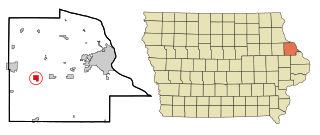
Farley is a city in Dubuque County, Iowa, United States. It is part of the Dubuque, Iowa Metropolitan Statistical Area. The population was 1,766 at the time of the 2020 census, up from 1,334 in 2000. Farley is the sixth-largest city in Dubuque County.

Missouri Valley is a city in Harrison County, Iowa, United States. The population was 2,678 at the time of the 2020 census.

Algona is the county seat of Kossuth County, Iowa, United States. The population was 5,487 at the 2020 census. Ambrose A. Call State Park is located two miles southwest of the city.

Le Mars is the county seat of Plymouth County, Iowa, United States. It is located on the Floyd River northeast of Sioux City. The population was 10,571 at the time of the 2020 census. Le Mars is part of the Sioux City metropolitan area.
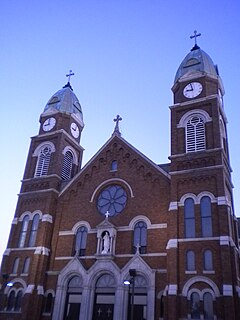
Alton is a city in Sioux County, Iowa, United States, along the Floyd River. The population was 1,248 at the 2020 census.

Boyden is a city in Sioux County, Iowa, United States. The population was 701 at the 2020 census.

Granville is a city in Sioux County, Iowa, United States. The population was 310 at the time of the 2020 census.

Hull is a city in Sioux County, Iowa. The population was 2,384 at the time of the 2020 census.
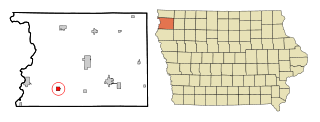
Ireton is a city in Sioux County, Iowa, United States. The population was 590 at the time of the 2020 census.

Maurice is a city in Sioux County, Iowa, United States, along the West Branch of the Floyd River. The population was 265 at the time of the 2020 census. It is home to the "Famous Maurice Fire Escape Slide" in the town park.

Orange City is a city in, and the county seat of, Sioux County, Iowa, United States. Its population was 6,267 in the 2020 census, an increase from 5,582 in 2000. Named after William of Orange, the community maintains its Dutch settler traditions visibly, with Dutch storefront architecture and an annual Tulip Festival.

Sioux Center is a city in Sioux County, Iowa. The population was 8,229 at the time of the 2020 census. Sioux Center is notable for its Dutch heritage, agribusiness, and as the location of Dordt University.

Sergeant Bluff is a city in Woodbury County, Iowa, United States. It is part of the Sioux City, IA–NE–SD Metropolitan Statistical Area. The population was 5,015 at the time of the 2020 census.
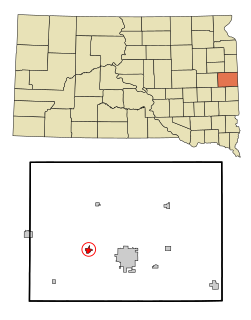
Volga is a city in Brookings County, South Dakota, United States with a population of 2,113 at the 2020 census.
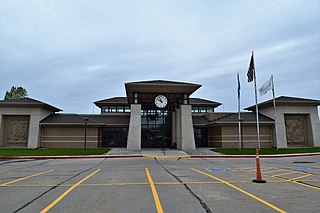
North Sioux City is a city in Union County, South Dakota, United States. The population was 3,042 at the 2020 census. It is part of the Sioux City, IA-NE-SD Metropolitan Statistical Area.
Spalding Catholic School is a private, Roman Catholic elementary school in Alton, Iowa. It is located in the Roman Catholic Diocese of Sioux City. The school formerly was a K-12 school system under the name Spalding Catholic Schools, headquartered in Granville, that included Spalding Catholic High School.
MOC-Floyd Valley Community School District is a rural public school district headquartered in Orange City, Iowa.




















